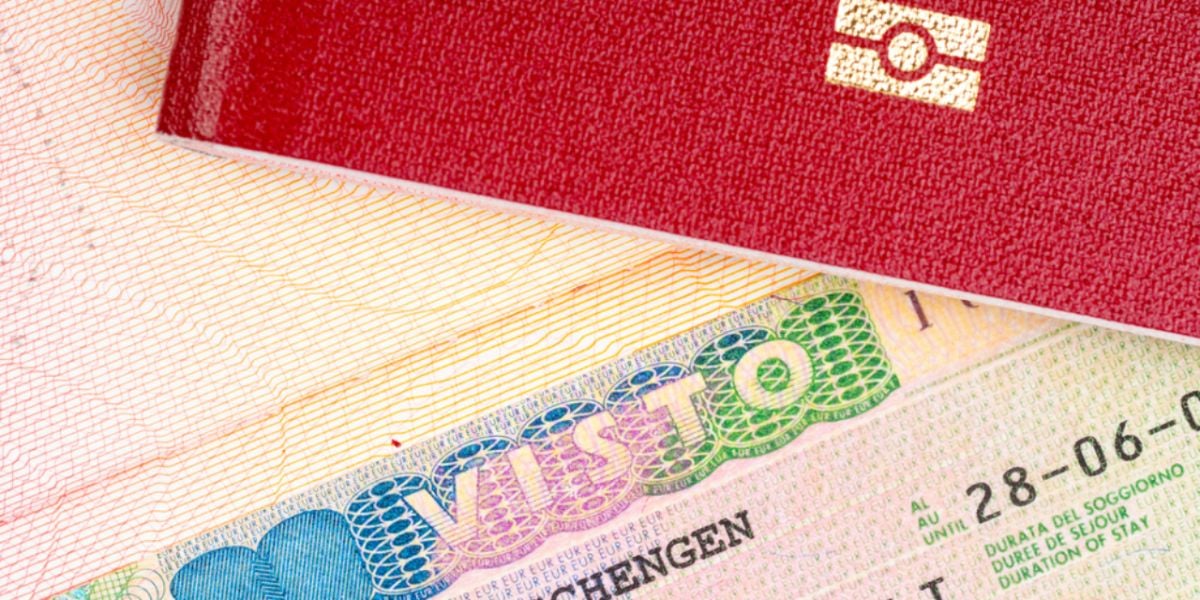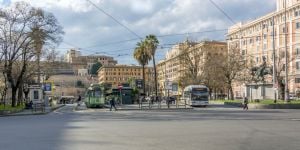
If you have decided to move to Italy, the question of a residence permit arises first. Depending on your nationality, your current country of residence, and the purpose and duration of your stay, you may need to apply for a visa. In this article, we provide you with some basic information on the procedures and steps you need to take to obtain your long-term residence permit and settle in Italy.

Types of visa for Italy
Italy issues three types of visa:
- The Uniform Schengen Visa (C Visa): for people wishing to stay in Italy for 90 days or less, also known as a short-stay visa. This type of visa is issued for all countries in the Schengen area;
- The National Visa (Visa D): for people wishing to stay in Italy for more than 90 days, also known as a long stay visa;
- Limited Territorial Validity Visa: issued for persons wishing to stay in Italy for humanitarian reasons, national interest, by virtue of certain international obligations, or in the case of an emergency situation where a person is not yet in possession of valid travel documents. It is issued by the diplomatic or consular representative of the applicant's country.
The type of visa also varies according to the reasons for traveling to Italy: work, tourism, retirement, study, family reunion, transit, or religious purposes. The website of Farnesina, the Ministry of Foreign Affairs and International Cooperation, in the Visa for Italy section, provides information on all the different cases concerning your stay in Italy.
If you plan to stay in Italy for 90 days or less, see our article "Short-term visa for Italy", otherwise known as the Uniform Schengen Visa.
Important:
European and Swiss nationals are not required to apply for a visa to stay in Italy. They are treated in the same way as Italian citizens, but they must register with the municipality of their place of residence within eight days of their arrival in Italy for any stay of more than 90 days.
Applying for a long-stay visa to Italy
If you are not an EU, EEA or Swiss national, you will need to apply for a national, long-stay visa (D visa). You are strongly advised to check the requirements for your situation on the following websites: the EU Immigration Portal and the Italian Ministry of Foreign Affairs. By providing information on your citizenship, country of residence, reasons and the estimated duration of your stay in Italy, you will obtain a list of documents to be provided when traveling to Italy, the place where you should apply for your visa (embassy or consulate), the visa fees and also a series of practical and useful links to better plan your stay: Italian institutions, business, schools, tourism, culture, art, gastronomy and history.
Generally, the application is made at the Italian Consulate in your country of residence, Visti d'ingresso service. During your visit, make sure to also seek confirmation of the list of documents to be provided, the steps to be followed and the authorizations you will need for relocating to Italy, including the Nulla Osta. This document is issued by the Sportello Unico per l'immigrazione (SUI), an immigration service active in all prefectures, and is essential in the visa application procedure. In fact, it is a requirement for the residence permit to be issued.
The Nulla Osta is requested in the following cases:
- if you have found a job in Italy, it is the employer who must apply for it;
- if it is a family reunification;
- if you wish to convert a residence permit, for example, student or trainee, into an employed residence permit.
The different types of long-stay visas for Italy (Visa D)
There are different types of long-stay visas in Italy, depending on whether you are moving for work, tourism, study, etc. Below, we will explain the most common types of long-stay visas for Italy:
The work visa for Italy
The work visa is issued to foreigners who have already found a job in Italy, even before they move. In this case, all formalities must be taken care of by the employer.
Note that Italy uses a quota system for most professions, which means that the work visa is only issued to applicants who meet all the criteria and only if the quota limit has not yet been reached.
As the process is administered regionally, the exact requirements may vary slightly depending on your professional field. As a rule, the company will have to apply for authorization, the Nulla Osta, from the local authorities, the 'Prefettura locale'. Once the application is accepted, the employer will receive the work permit for the future employee. In turn, the local municipality will also inform the Italian embassy of your country of residence, which will issue the entry visa. This takes an average of 30 days. Once the entry visa is approved, you have six months to collect your work visa from the local Italian embassy.
Find more information on the EU Immigration Portal.
Good to know:
The visa application for highly skilled professional profiles differs from that of regular workers. These non-EU citizens can apply for an EU Blue Card if they have a binding job offer or contract. Indeed, the duration of the residence permit for highly skilled expatriates will here be linked to the duration of the work permit mentioned in the employment contract. The quota system does not apply to such profiles. This is a fast-tracked process that can be done online, but it can take up to three months.
Self-employed visa for Italy
Entrepreneurs and self-employed people have to follow a similar process to obtain a work visa in Italy. If you plan to start a business in Italy, you will need to apply for a certificate from the Chamber of Commerce, confirming that you have the authorization of local authorities.
The requirements vary from case to case, but you will generally need to demonstrate your ability to finance the business, your qualifications and diplomas, and a business plan. Self-employed visas in Italy are valid for two years.
Note that applicants wishing to run a start-up may qualify for an Italia Startup Visa, whether they are still in their country of residence or already in Italy with the intention of extending their stay. You will find all the necessary information on the dedicated website.
Seasonal or fixed-term workers in Italy
Part-time and fixed-term seasonal contract workers have to follow a similar process to those employed full-time. The employer takes care of most of the visa process on behalf of the beneficiary. Temporary visas in Italy are generally valid for six months and extendable for a further three months.
Good to know:
Under the Working Holiday Agreement:
- people aged 18-30 from Australia, New Zealand, or South Korea,
- people aged between 18 and 35, coming from Canada,
can apply for a visa that will allow them to work for one year in Italy, provided they can prove that the main purpose of their stay is tourism. For Canadian citizens, this visa can be extended for a further year.
The Elective Residence Visa
The Elective Residence Visa is intended for non-EU, EEA and Swiss citizens who have chosen to reside permanently in Italy and who can support themselves without having to find employment in the country (dependent, independent, or remote).
This visa is usually issued to retirees or people who have self-sufficient income and financial assets. This may include, for example, people with international investments or assets.
This visa does not allow the financing of the stay in Italy through employment.
The student visa for Italy
The student visa for Italy is reserved for foreigners over 18 years of age who can prove that they are enrolled in a course at an Italian educational institution or in vocational training for a fixed period.
The student visa must be obtained before arrival in Italy. It is issued by the Italian embassy and/or consulate in the applicant's country of residence.
Students from the EU, EEA and Switzerland do not need a visa but must have a valid passport and register with the local police station for a residence permit within eight days of arrival in Italy.
In Italy, the student visa allows you to work up to 20 hours per week, but students who are citizens of non-EU countries must obtain a work permit, which can take up to two months.
To apply for a student visa, the applicant must provide:
- A passport photo;
- A passport (as well as an identity card);
- A letter of acceptance from the university;
- Proof of sufficient financial means, including the amount needed to return to the country of residence or a valid return ticket;
- Additional documents as requested by the Italian authorities;
- Proof of accommodation.
The family reunion visa for Italy
The family reunion visa in Italy can be applied for once the applicant has received their long-term residence permit and if they have the sufficient gross annual income to support all family members once they are reunited.
Family members include legitimate adult spouses, minor unmarried children or stepchildren, dependent adult children with serious health problems, dependent parents with no children in their country of origin or parents over 65 years of age (for proven health reasons). Family members must obtain a long-term visa (D visa) and apply for a residence permit upon arrival in Italy.
The duration of the residence permit in Italy
The duration of the residence permit is equivalent to the duration of the type of visa you hold. It cannot exceed:
- three months in case of tourism or business;
- nine months in the case of seasonal work;
- 12 months in the case of studies or professional training, renewable if it is a multi-year course;
- 24 months in the case of self-employment, employment, or family reunification;
- a duration linked to a specific and precisely documented request.
How to renew your residence permit in Italy
The renewal of your residence permit in Italy must be done at the competent “questura” in the province where you are resident. All applications must be made at least two months (60 days) before the expiry date of your permit to give the authorities time to check your personal case and the conditions of your visit to Italy. If you are moving to Milan, for example, you can find information on the Questura di Milano website.
How to convert your residence permit in Italy
To convert a residence permit already in your possession, you must request a “nulla osta” from the Sportello Unico per l'Immigrazione (SUI) of the prefecture competent for the territory in which you have taken up residence, and once you have obtained it, you can officially apply to the Questura for conversion. Please note that the requirements for the conversion of your permit are:
- the quotas provided for in the decree on the programming of migratory flows;
- the current validity of your residence permit.
The student residence permit can be converted into a residence permit for employed or self-employed workers if you meet the requirements. The residence permit for a seasonal worker can be converted into a residence permit for a worker employed for an indefinite period if:
- the applicant is in his/her second year of seasonal work on Italian territory, and his/her permit is still valid;
- the applicant, at the end of the first period of seasonal work on Italian territory, is in possession of a valid permit.
Useful links :
Italian Ministry of Foreign Affairs (Farnesina) - Visa application
We do our best to provide accurate and up to date information. However, if you have noticed any inaccuracies in this article, please let us know in the comments section below.








